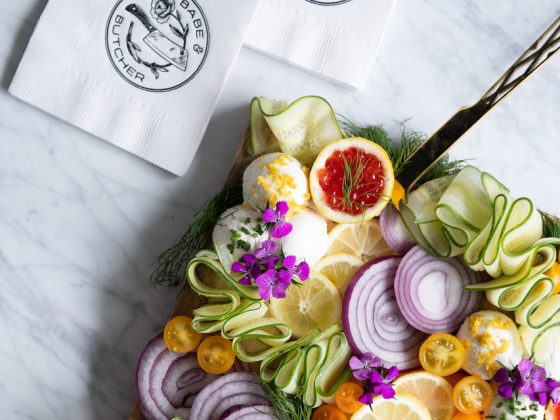It is that time of year filled with summertime barbeques, graduation parties and poolside get-togethers, which means getting our yards in tiptop shape with Blackhawk Hardware.
Blackhawk Hardware hosts The Queen City’s finest Garden Center to help you achieve your dream garden oasis. Blackhawk’s Garden Center experts are thrilled to share their passion and advice on how to spruce up your garden this summer with their top flower pick — hydrangeas.
Blackhawk features over a dozen types of hydrangeas this season that are perfect for different yard types, light sources and personal aesthetics. Want some gardening tips for beginners too? We’ve got you covered.
We talked with Blackhawk Hardware’s Garden Center Manager, Sally, to learn more about the types of hydrangeas they offer and teach us how to care for these flowers in the Charlotte region properly.
Blackhawk will have 14 types of hydrangeas this year. Tell me about what makes all of these different?
Here are a few of the hydrangeas we have right now in Blackhawk Hardware’s Garden Center to highlight the differences:
Macrophylla, aka The Mophead, is a showy, beautiful ball-like bloom shrub and is a Charlotte favorite. Blooms will either be blue, pink or white, depending on the variety you choose. Plant where there is morning sun and afternoon shade in your yard. Water almost daily when we get into the 90s. These hydrangeas bloom on “old wood.” Prune this shrub after the shrub has completed blooming. Fertilize in the early spring and one more time before Memorial Day. At Blackhawk Hardware, we recommend Espoma Holly Tone. To keep the blue in your hydrangea, use Espoma Soil Acidifier. Use the Espoma Garden Lime to make your hydrangeas pink or magenta. Sit back and enjoy these blooms all summer long!
Panicle, aka the Limelight, turns on after the mophead varieties bloom. They can handle the sun, heat and humidity. They bloom on “new wood.” Prune in early spring to encourage new growth. Fertilize in early spring with a heavier phosphorus fertilizer to get more bloom. This beauty’s bloom is more of a snow cone shape.
The Oakleaf Hydrangea is a native to the United States and thrives in woodland areas with moist soil. The species tolerates full sun to part shade. Little pruning is required for this variety. It flowers on “old wood” and needs to be fertilized in early spring.

What is the most rewarding part of planting hydrangeas?
The most rewarding part of growing hydrangeas is seeing the beautiful blooms throughout my yard. They also make for outstanding cut flower arrangements.
What is the hardest part about gardening with hydrangeas?
The hardest part is not understanding your yard’s light and how much water the flowers may require. Big Leaf Hydrangeas don’t like the hot sun. They want a morning sun with an afternoon shade and tend to be very thirsty. When Charlotte’s temperatures are in the 90s, I water deeply every other day. Another point for a “new gardener” is that they are deciduous (they lose their foliage in the winter). Many people think they have killed them, but they are just dormant and asleep.
How can someone keep these blooms looking wonderful year-round?
One of the most important things to remember with hydrangeas is that they are deciduous. Watering is still needed regularly. It is a personal choice which hydrangea you want to plant but ALWAYS consider your yard’s lighting.
What are the best fertilizers and soils? Can you also purchase these at Blackhawk?
There are a few different things to keep in mind when looking at different fertilizers and soils.
With fertilizers, there are three components: nitrogen which gives the plant height; phosphorus which helps root establishment and bloom; and potassium which is needed for overall plant health. In fertilizers, this is called 10-10-10. In fertilizers, this is called 10-10-10.
There is also slow-release versus fast-release fertilizer. Generally, slow-release chemical fertilizer is the least stressful to the plant, and it feeds the plant “enough” for the time being. Usually, you would do it one time a year in early spring. An example of a plant that would like a slow-release fertilizer is a houseplant. A fast-release chemical fertilizer is quick in, quick show and quick out. It is usually water-soluble. You will have to repeat this process every two weeks. An example of what would need a quick-release fertilizer would be a blooming hanging basket; you want to encourage blooms all summer long.
At Blackhawk Hardware, we recommend the Espoma Fertilizer product line to our customers. It is low in numbers so that you may fertilize more often and not burn your plants. The Soil Acidifier keeps your hydrangeas blue, and the Garden Lime is for keeping them pink or magenta.
Big Leaf Hydrangeas need several light applications of a Holly Tone organic fertilizer in March, May and June. Do not fertilize at the trunk of the plant. Instead, look at the plant’s drip line and circle the drip line. Always water heavily after you fertilize so it will work into the plant’s roots. Oakleaf and Limelights need two applications in April and June.
Be sure to look at blackhawkhardware.com for more tips and tricks from the Garden Center, and check out Blackhawk Hardware’s Instagram and see everything they have to offer.












